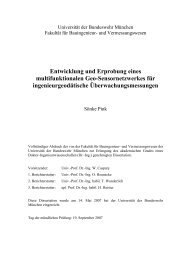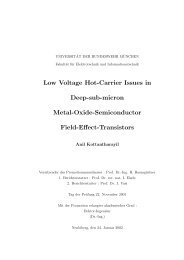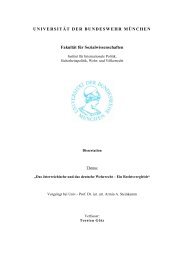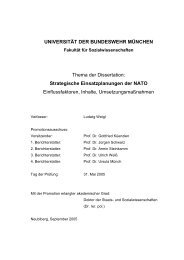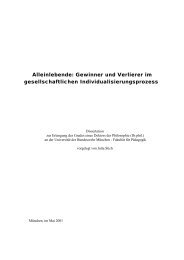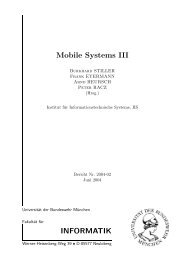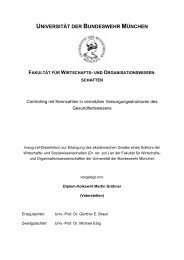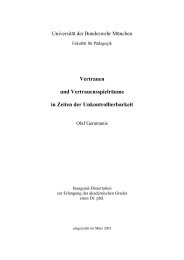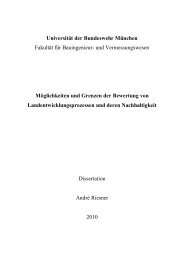Satellite Orbit and Ephemeris Determination using Inter Satellite Links
Satellite Orbit and Ephemeris Determination using Inter Satellite Links
Satellite Orbit and Ephemeris Determination using Inter Satellite Links
- No tags were found...
You also want an ePaper? Increase the reach of your titles
YUMPU automatically turns print PDFs into web optimized ePapers that Google loves.
Autonomous Onboard Processing<strong>Inter</strong> <strong>Satellite</strong> <strong>Links</strong>From experiences made during this project regarding execution times of different softwaremodules, <strong>and</strong> under the assumption that the CPU is approximately 20 times slower than a 350MHz Pentium II, a very rough estimate can be derived for the required computational poweronboard a satellite:~ 100 ms for orbit determination (including non-linear state prediction) per measurementepoch (realtime)~ 30 ms for orbit propagation per epoch, i.e. 1 s to generate 50 trajectory points ahead,separated 144 s. (offline)~ 10 s for fitting a 2-hour-valid broadcast ephemeris over approximately 50 trajectory points.(offline)~ 2 ms for orbit propagation per epoch <strong>using</strong> broadcast ephemeris force model (for othersatellites in constellation); for 20 ISL’s requiring 40 ms. (realtime)~ 50 ms to perform a RAIM-like algorithm <strong>using</strong> 20 ISL’s (realtime)This results in approximately 200 ms for the tasks which have to be performed in realtime, i.e.once per second, in order to achieve integrity requirements. The remaining 800 ms per onesecond-duty-cyclecan be used to perform sequentially the (slightly more than) 10 s offlinetask. The 2-hour-valid broadcast ephemeris could updated, say every 30 minutes <strong>and</strong> wouldrequire less than 6 ms of computing time per one-second-duty-cycle, i.e. 0.6% of the availablecomputing power.Note that this is a very rough preliminary estimate, but it seems to be feasible to perform allthese tasks, required for full autonomous onboard processing with 20% – 25% of the availablecomputing power.7.2.2 Onboard Processing <strong>using</strong> ISLs<strong>Inter</strong> satellite links are per definition measurements which are taken onboard <strong>and</strong> thereforeseem to perfectly match the requirements for an onboard processor. But ISL’s bear someproblems for a constellation consisting of autonomous processing satellites.The optimal approach to process ISL's would be, to process all measurements <strong>and</strong> all satellitesstates in one large filter. This is hard to achieve, if each satellite has its own state estimatoronboard. The following example shall highlight how satellite state estimates get correlated bythe inter satellite links.Let us assume 3 satellites , represented by their state X 1,2,3 . The measurements are processedtogether in on Kalman filter some other least squares estimator. The state transition of allthree satellites can be written as⎡x1⎤ ⎡Φ10 0 ⎤ ⎡x1⎤Eq. 7.2-1⎢x⎥ ⎢2020⎥ ⎢x⎥⎢ ⎥=⎢Φ⎥⋅⎢2⎥⎢⎣x ⎥ ⎢3 ⎦ ⎣ 0 0 Φ ⎥ ⎢3 ⎦ ⎣x⎥3 ⎦kkk−1Page 156R. Wolf



